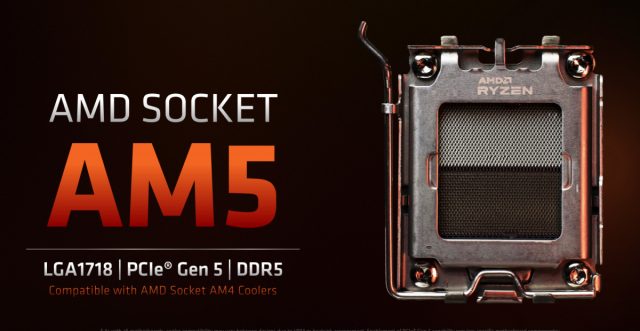
AMD’s AM5 Socket to Only Support DDR5, Will Feature a Dual-Chiplet Design
The last time we reported on AMD’s upcoming AM5 socket, we said it would probably support both DDR4 and DDR5 memory. This would be similar to Intel’s current approach with Alder Lake as you can buy motherboards that support one memory type or the other. This offers upgraders the most flexibility in a time where DDR5 memory is still rather expensive. A new report with supply chain sources says AMD will not be going that route, and has instead chosen to only support DDR5. This could be bad news for people who were hoping to build an affordable Zen 4 system.
Supply chain sources told that the company’s upcoming X670 and B650 platforms will be DDR5 exclusively. This essentially forces people who make the plunge into an expensive upgrade path. Currently DDR5 memory is more than twice as expensive as DDR4. It also might put an AMD in a tough spot compared to Intel. Not only does Intel still supports DDR4 on Alder Lake, it will also support it on its Raptor Lake successor too. Although, it seems like both companies will be pushing for people to move on and upgrade to DDR5. AMD will be doing it by forcing peoples’ hand, and Intel is just to not focus on DDR4 boards. To be fair to AMD, it’s entirely possible DDR5 prices will have come down by the time AMD5 launches. The market for components seems to be slowly returning to normal, but the chip shortage has heavily impacted DDR5 sticks. This is because DDR5 has separate chips onboard for power management and VRMs, which were previously on the motherboard.

Additionally, AMD will be moving to a dual-chiplet design for its high-end X670 platform. Each chiplet provides I/O, and both chips will be identical instead of having different responsibilities. This makes them wholly unlike the Northbridge/Southbridge of yesteryear. This will allow AMD to essentially double the I/O that’s possible on its flagship offerings, while still allowing for more affordable midrange boards with a single chip. The chips will be manufactured on TSMC’s 6nm process. Each one will offer eight lanes of PCIe 4.0, four SATA ports, and USB ports. Some will offer a PCIe 5.0 connection as well, presumably for Zen 4 CPUs while its Rembrandt APUs get PCIe 4.0.
All this Gen 4 vs. Gen 5 talk comes at as the industry comes to an inflection point. Companies are right on the cusp of moving as a group to PCIe 5.0 but not everyone seems ready to jump. For example the notorious GPU mole is claiming Nvidia’s next-gen AD102 die will use a PCIe Gen 4 interface. All current GPUs are PCIe Gen 4, but it was hoped that next-gen would all be on the upgraded connection. That’s because the 5.0 interface offers double the bandwidth of 4.0, going from 64GB/s to 128GB/s of total bandwidth. AMD seems to be going all-in on PCIe Gen 5 though, and will likely offer it not only on its motherboards, but on its RDNA3 GPUs as well. This would allow the company to tout having a true “next-gen” architecture. It could be a feather in AMD’s cap too, if Nvidia decides to stick with PCIe 4.0 for now.
Now Read: